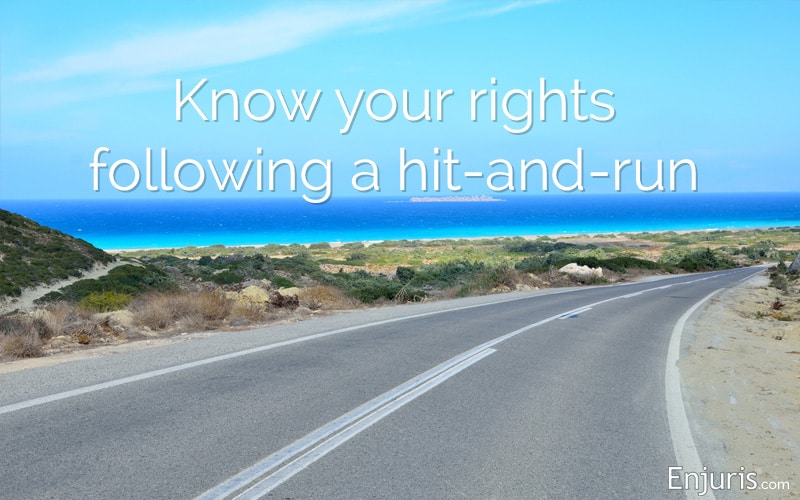
Understand the repercussions of hit-and-run incidents in Rhode Island
Understand the laws, penalties, and your rights following a hit-and-run incident in Rhode Island. Whether you’re a victim or a perpetrator, this guide offers clarity and concrete steps to take.
Hit-and-run accidents may seem inconceivable to you, but they're actually quite common. According to the AAA Foundation for Traffic Safety, a hit-and-run crash happens somewhere in the United States every 43 seconds.
Hit-and-run victims are often left confused and worried they’ll have no way to receive compensation for their injuries and property damage.
In this article, we’ll explain Rhode Island’s hit-and-run laws. Additionally, we’ll explore the steps you should take if you’re the victim or perpetrator of a hit-and-run crash.
Defining a hit-and-run in Rhode Island
Under Chapter 26 of the Rhode Island General Laws, a hit-and-run occurs when you’re involved in a motor vehicle accident and fail to take any of the following steps:
- Stop your vehicle at the scene of the accident (or as close to the scene as possible),
- Provide your name, address, insurance company, insurance policy number, and vehicle license number to any person involved in the crash, and
- Render reasonable assistance to anyone injured.
If the vehicle you collide with is unoccupied, you must still take two important steps:
- Stop your vehicle at the scene of the accident, and
- Locate the owner of the property or leave a written note providing your name and contact information.
In North Kingstown, Rhode Island, a car vs. pedestrian hit-and-run incident left two juveniles injured on Devil's Foot Road. The suspect, Latoya Rose, was arrested and charged with two counts related to the incident.
Rose acknowledged driving her vehicle on the night in question and stated that she believed she hit a deer. Video surveillance footage showed her stopping briefly after the accident but failing to give aid or call emergency services.
Penalties for fleeing the scene
The consequences of evading your responsibilities after an accident depend on the seriousness of the crash.
Here’s a look at the penalties:
| Rhode Island hit-and-run penalties | |||
|---|---|---|---|
| Type of accident | Fine | Imprisonment | License suspension |
| Property damage only | $500-$1,000 | Up to 6 months | Up to 6 months |
| Injury | Up to $5,000 | Up to 5 years | 1-5 years |
| Serious bodily injury | $1,000-$5,000 | Up to 10 years | 2 years |
| Death | $5,000-$10,000 | 2-15 years | 3 years |
Notably, penalties may increase with each subsequent offense.
Legal recourse for victims
Recovering damages after a hit-and-run accident is more difficult than other types of accidents, but victims aren’t necessarily left in a lurch.
If the police are able to identify the hit-and-run driver, you can make a claim against their insurance or file a personal injury lawsuit against them.
If you are unable to identify the hit-and-run driver, the following optional insurance policies may still provide coverage:
- Uninsured motorist (UM) coverage. UM coverage provides coverage for damages sustained as a result of an accident involving a driver who can’t be located. UM coverage is not required in Rhode Island.
- Collision coverage. Collision coverage helps pay to repair or replace your car if it’s damaged in an accident, regardless of who’s at fault. Whether or not collision coverage covers hit-and-run accidents depends on your specific policy.
- Personal injury protection (PIP) coverage. PIP coverage provides up to $10,000 in coverage, regardless of who’s at fault. Whether or not PIP covers hit-and-run accidents depends on your specific policy.
- MedPay coverage. MedPay coverage provides coverage for medical expenses, regardless of who’s at fault. Again, whether or not MedPay covers hit-and-run accidents depends on your specific policy.
Steps to take if you’re the victim of a hit-and-run
If you’re involved in a hit-and-run accident, you must resist the urge to chase after the perpetrator. Chasing a fleeing driver puts you and everyone else on the road in danger. Instead, follow these steps:
- Move your vehicle to a safe spot off the road if possible.
- Call the police and provide them with any information you have about the hit-and-run vehicle (make, model, color, license plate, distinguishing features, physical description of the driver).
- Contact your insurance company to see if your policy covers hit-and-run accidents.
Steps to take if you’re the perpetrator of a hit-and-run
Fleeing the scene of an accident is never the right decision, but people make mistakes. There are a number of reasons why you might flee the scene of an accident, including:
- Panic
- Fear of confronting the victim
- Intoxication
- Lack of insurance
If you flee the scene of an accident, you should immediately call the nearest police station and provide notice of the accident, along with your contact information. Doing so might not save you from a hit-and-run conviction, but it’s the right thing to do and it may result in you receiving a lesser sentence than if law enforcement tracks you down.
The importance of legal representation
Navigating the aftermath of a hit-and-run accident can be overwhelming, especially if the hit-and-run driver can’t be found or if they contest liability. A personal injury lawyer familiar with Rhode Island laws can make a world of difference. Not only can they help you explore all of your legal options, they can ensure you receive the compensation you deserve, whether it’s negotiating with an insurance company or representing you in a trial.
The best part? Most initial consultations are free, meaning you have nothing to lose.
While hit-and-run incidents can be deeply unsettling, being informed about Rhode Island’s laws can offer guidance and hope. Whether you're a victim seeking justice or a driver unaware of your responsibilities post-accident, understanding the legal landscape is vital.
See our guide Choosing a personal injury attorney.
